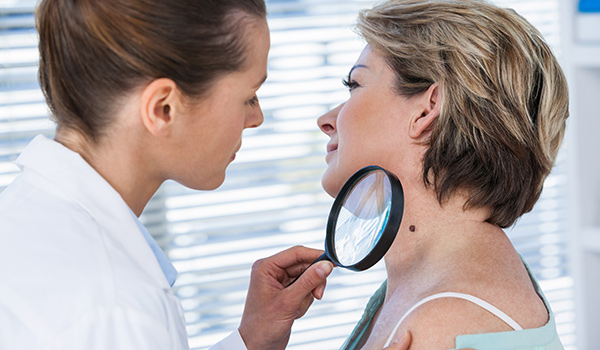
One of the most dangerous forms of skin cancer is melanoma. Melanoma is caused when ultraviolet (UV) rays from the sun interact with a person’s skin cells and causes mutations that allow the skin cells to multiply abnormally.
This typically happens when a person is over-exposed to the sunlight and/or if a person is not taking precautions to protect their skin from the sun- such as putting on sunscreen.
Approximately 50% of all melanomas are non-invasive and will not spread to other parts of the body. In some cases however, the cancer can spread from the surface of the skin and go deeper into the tissues. If this happens, melanomas can lead to death.
Thus, regardless of who you are, it is important to take extra good care of your skin to steer clear of this potentially horrible condition.
Know the risk factors
What are the risk factors you should consider when it comes to melanoma?
- Fair skin. People with less melanin are more likely to get melanomas.
- Excessive sun exposure.
- Personal/family history of melanoma. Melanoma has a genetic component to it. If a close relative has had it, it is more likely to happen in a person.
- A weakened immune system
- A history of moles
Mole or Melanoma? How to tell
How can you tell the difference between a harmless mole and a potentially life-threatening melanoma? Here’s what to look out for.
- A harmless mole is symmetrical. This means if you draw a line through it, you will get approximately similar halves. Melanomas on the other hand are not symmetrical.
- Tying into the point above, moles tend to have regular edges. Melanomas on the other hand do not.
- A mole is usually just one color- black, brown, reddish or skin-colored. If the spot on your skin has multiple colors, this could point to a melanoma.
- Moles tend to have a smaller diameter than melanomas.
- Moles stay the same over time. If you notice the spot on your skin evolving or changing in anyway, this could be a tell-tale sign of a melanoma.
Preventing Melanoma – 5 practical things you can do
- Wear sunscreen. It is impossible to avoid going into the sun. And besides, don’t most of us live for nice, warm summers? So yes, you should absolutely enjoy the sun outside. However, it is important that you protect your skin from the sun’s UV rays. The easiest step you can take in this direction is to wear sunscreen. If your family has had a history of melanoma, it may be necessary to wear sunscreen even in the winter. The sun still comes out in the winter and although the weather might be cold, UV rays don’t lose their power just because the season has changed. Sunscreen that contains SPF 15 or higher is the best.
- Wear protective clothing. Hats, sunglasses and clothes that cover sensitive areas of your skin are a must-have especially in the summer. If you are going to enjoy some time at the beach, invest in umbrellas and tents to keep the sun out.
- Talk to your dermatologist. Most melanomas start out looking like a harmless mole. Like we mentioned above, in half of the cases, it may indeed be a harmless mole. To be on the safe side however, talk to your dermatologist regularly about any unusual developments on your skin. Early diagnosis is always better. People always think that going to see a dermatologist will cost them a lot of money. However, a lot of routine medical skin care will be covered by your insurance company!
- Artificial tanning is not a good idea. A good tan looks attractive. The drawback to tanning however- especially when it uses artificial UV rays- is that it can trigger melanoma formation. Not to mention, over time, the cumulative exposure to these artificial rays can lead to wrinkles and lax skin even if you never get skin cancer. Just as a “little smoking” can ruin you for life, a “little” artificial tanning can have fatal consequences.
- Keep children out of the sun. Melanomas can develop in children too. Keep them out of the sun as much as you can. Applying sunscreen and putting protective clothing on them is just as important as it is in adults.
BONUS POINT – Eating the right foods is an essential step in keeping cancers away in general. Invest your time and effort in eating a balanced diet that contains all the nutrients your body needs to fight diseases.
Taking care of your skin is important when it comes to preventing melanoma. Thankfully, the steps involved in taking care of your skin are not complicated. The five steps we shared in this post are your best allies when it comes to preventing melanoma. If you found this post helpful, share it with someone else and let’s keep melanoma out.

